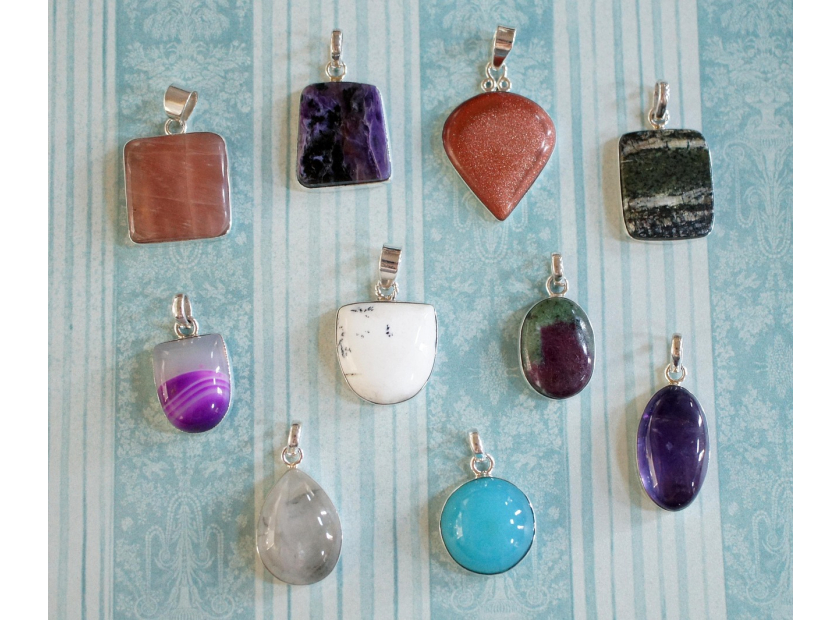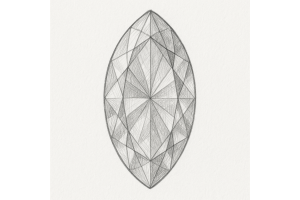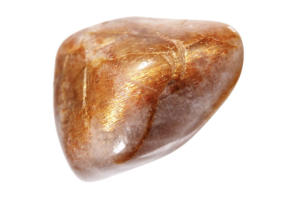GBP
/
GBP
/
Shipping to:
Currency:
Natural vs Lab-Created Gemstones: What’s the Real Difference?
Gemstones have captivated humanity for centuries, adorning jewellery and symbolising wealth, power, and beauty.
Today, when selecting a gemstone, one faces a choice between natural stones and their lab-created counterparts.
Understanding the distinctions between these two can help you make an informed decision that aligns with your values and preferences.
Understanding Gemstones: Natural vs Lab-Created
Natural gemstones are minerals or organic materials formed through geological processes without human intervention.
Over millions of years, natural forces such as heat and pressure create these treasures beneath the Earth's surface.
Once formed, they are mined, cut, and polished for use in jewellery.
Lab-created gemstones, also known as synthetic or man-made gems, are produced in controlled laboratory environments.
Utilising advanced technological processes, scientists replicate the conditions under which natural gemstones form, resulting in stones that are chemically, physically, and optically identical to their natural counterparts.
To explore rings made with both, check out the gemstone engagement rings collection.
Formation Processes: Nature's Handiwork vs Human Innovation
Natural gemstones owe their existence to the Earth's dynamic geological activity.
Elements such as temperature, pressure, and mineral composition interact over extensive periods to create these stones.
For example, diamonds form deep within the Earth's mantle under extreme pressure and temperature before volcanic activity brings them closer to the surface.
In contrast, lab-created gemstones are crafted through methods like High Pressure High Temperature (HPHT) and Chemical Vapour Deposition (CVD).
HPHT mimics the natural conditions found deep within the Earth, while CVD involves breaking down gas molecules to deposit carbon atoms onto a substrate, building up the gemstone layer by layer.
If you’re interested in the science behind this, take a look at how gemstones and diamonds are formed.
Key Differences Between Natural and Lab-Created Gemstones
Origin and Formation
Natural gemstones are products of Earth's natural processes, whereas lab-created gems are the result of human ingenuity in replicating those conditions.
Appearance
Both types can appear identical to the naked eye.
However, natural gemstones often contain unique inclusions or imperfections, while lab-created gems tend to have higher clarity and fewer inclusions due to their controlled formation environment.
Rarity and Availability
Natural gemstones are finite and can be rare, especially those of high quality.
Lab-created gemstones can be produced on demand, making them more readily available.
Value and Pricing
The rarity of natural gemstones often makes them more expensive and potentially more valuable over time.
Lab-created gems are generally more affordable but may not hold the same resale value.
To dive deeper into this topic, check out the guide on lab-grown diamonds vs gemstones.
Environmental and Ethical Considerations
Mining natural gemstones can have significant environmental impacts and may involve ethical concerns, such as unfair labour practices.
Lab-created gemstones offer a more sustainable and ethical alternative, with a reduced environmental footprint and transparent production methods.
Identifying Natural vs Lab-Created Gemstones
Distinguishing between natural and lab-created gemstones can be challenging without specialised equipment.
Gemologists often use tools like spectroscopes, microscopes, and ultraviolet light to identify subtle differences.
Certification from reputable gemological laboratories can provide assurance regarding a gemstone's origin.
If you’re looking for stunning yet ethical choices, check out the latest range of non-traditional engagement rings featuring unique gemstone designs.
Pros and Cons of Natural Gemstones
Advantages:
- Uniqueness
Each natural gemstone has distinct characteristics, making it one-of-a-kind. - Tradition and Prestige
Natural gems have a long history and are often associated with luxury and status. - Potential Investment
High-quality natural gemstones can appreciate in value over time.
Disadvantages:
- Cost
Natural gemstones can be expensive, especially those that are rare and of high quality. - Ethical Concerns
Some gemstones may be sourced from conflict zones or involve exploitative labour practices. - Environmental Impact
Mining can lead to habitat destruction, soil erosion, and pollution.
Pros and Cons of Lab-Created Gemstones
Advantages:
- Affordability
Generally more budget-friendly than natural gemstones. - Ethical Production
Free from concerns related to conflict zones and exploitative labour. - Environmental Benefits
Lower environmental impact compared to traditional mining. - Quality Control
Often exhibit higher clarity and fewer inclusions.
Disadvantages:
- Perceived Value
May lack the prestige associated with natural gemstones. - Resale Value
Typically have lower resale value compared to natural counterparts. - Emotional Significance
Some may feel that lab-created gems lack the romanticism of natural stones.
Making the Right Choice for You
When deciding between natural and lab-created gemstones, consider factors such as budget, ethical and environmental values, intended use, and personal preference.
Both options offer beauty and durability, so the choice ultimately depends on what aligns best with your priorities.
Common Myths About Lab-Created Gemstones
"Lab-Created Gemstones Are Fake"
False. They are real gemstones with the same chemical composition as natural ones.
"They Are Not as Durable"
Incorrect. Lab-created gemstones have the same hardness and durability as their natural counterparts.
"They Lack Beauty"
Not true. Lab-created gems can be just as stunning and often have fewer inclusions.
FAQs
Are lab-created gemstones real?
Yes, they are chemically, physically, and optically the same as natural gemstones — just created in a lab instead of formed underground over millions of years.
Do lab-created gemstones last as long as natural ones?
Absolutely. Their durability is identical, making them suitable for everyday wear.
Is there a big price difference between natural and lab-created gemstones?
Yes. Lab-created gemstones are typically more affordable due to their abundance and efficient production.
Are lab-grown diamonds better for the environment?
In most cases, yes. They generally have a much smaller environmental footprint compared to traditional diamond mining.








